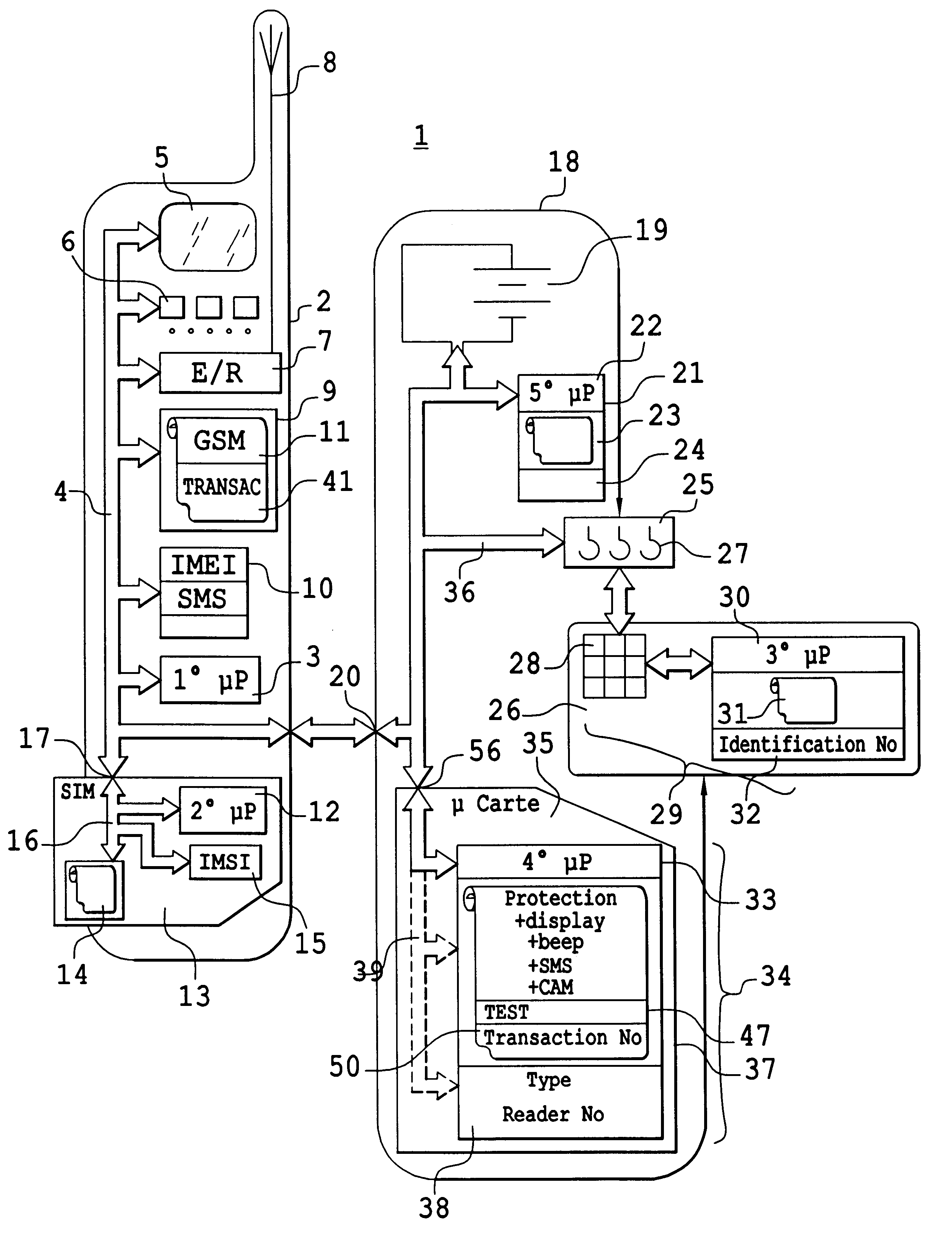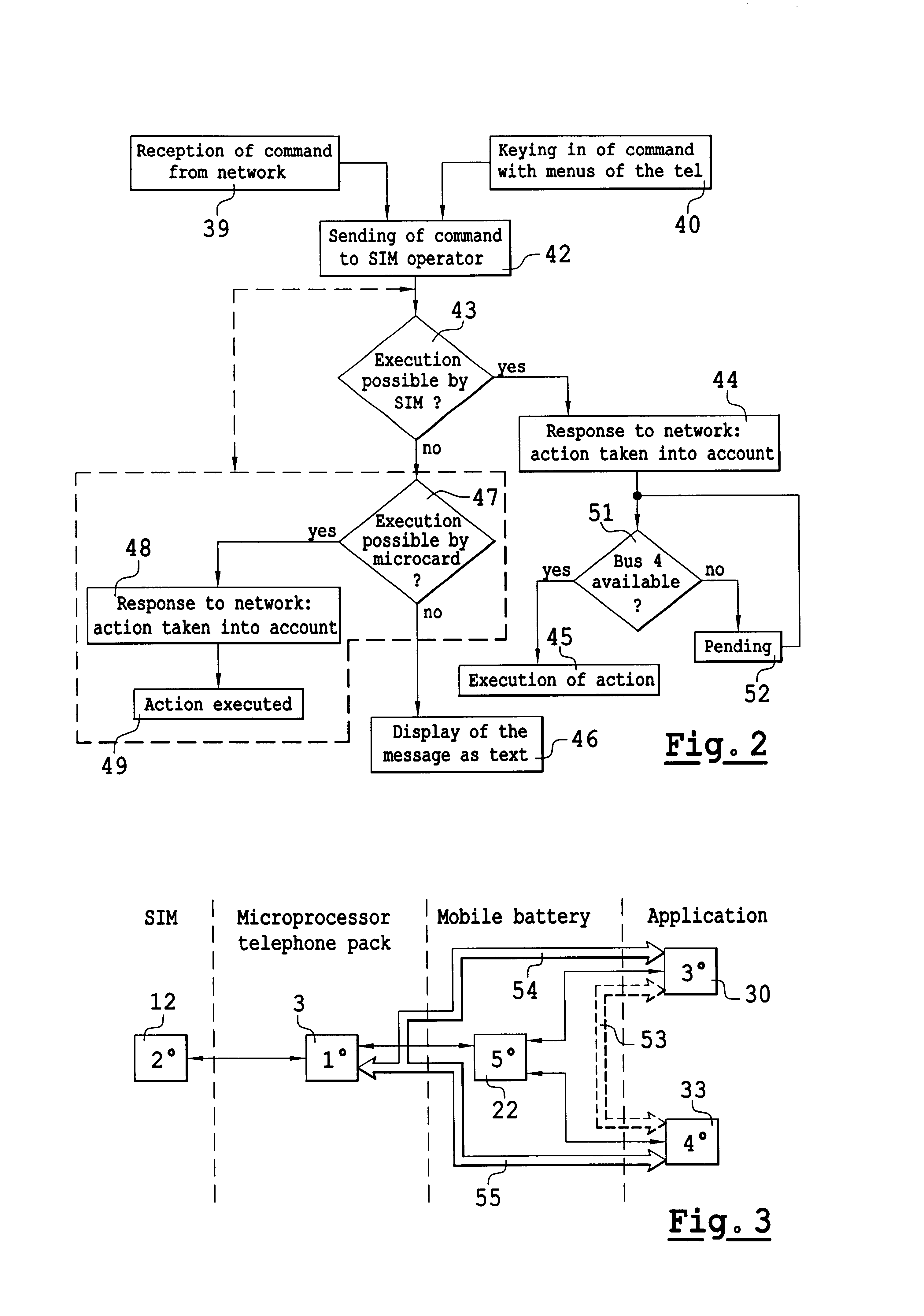Mobile phone
a technology of mobile phone and handset, applied in the field of mobile phone, can solve the problems of not being established, difficult to obtain agreement, and equipment of this kind currently shows several types of problems
- Summary
- Abstract
- Description
- Claims
- Application Information
AI Technical Summary
Benefits of technology
Problems solved by technology
Method used
Image
Examples
Embodiment Construction
FIG. 1 shows a mobile telephone 1 according to the invention. This mobile telephone 1, in one example, comprises a mobile telephone pack 2 with the essential functions of the mobile telephone. This pack 2 thus essentially comprises a first microprocessor 3 connected by means of a data, control and address bus 4 to a display screen 5, a control keypad 6 of the mobile telephone and a transmission-reception device 7. The transmission-reception device 7 is furthermore linked to a radiating means 8 herein symbolized by an antenna. The first microprocessor 3 is capable of physically managing the telecommunications circuits of the mobile telephone, especially transmission-reception circuits 7. The first microprocessor 3 is also capable of processing the speech or data signals exchanged or of having them processed. To this end, it comprises a program memory 9 and a data memory 10. The program memory 9 comprises a program 11, herein called a GSM, to carry out the physical management of the t...
PUM
 Login to View More
Login to View More Abstract
Description
Claims
Application Information
 Login to View More
Login to View More - R&D
- Intellectual Property
- Life Sciences
- Materials
- Tech Scout
- Unparalleled Data Quality
- Higher Quality Content
- 60% Fewer Hallucinations
Browse by: Latest US Patents, China's latest patents, Technical Efficacy Thesaurus, Application Domain, Technology Topic, Popular Technical Reports.
© 2025 PatSnap. All rights reserved.Legal|Privacy policy|Modern Slavery Act Transparency Statement|Sitemap|About US| Contact US: help@patsnap.com



